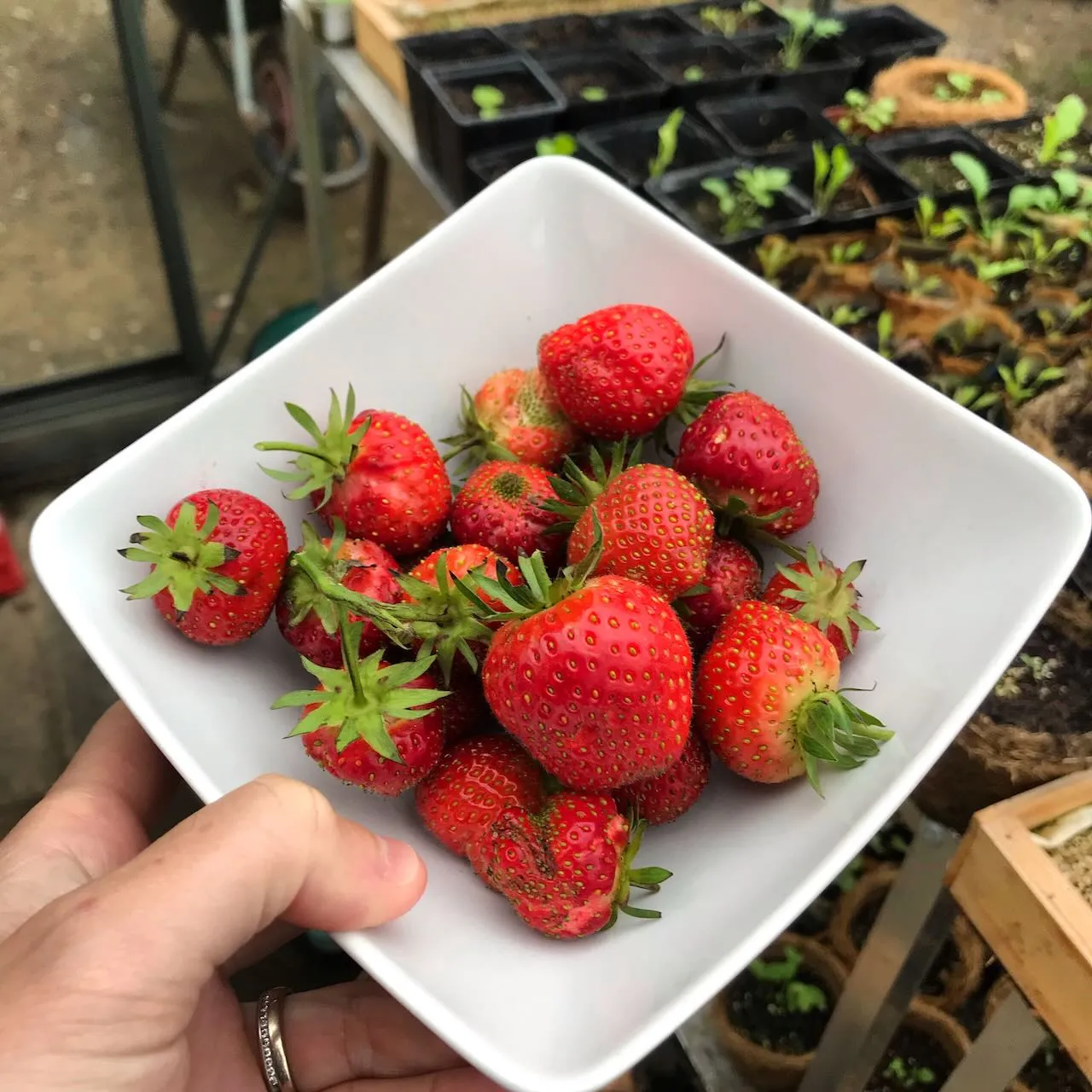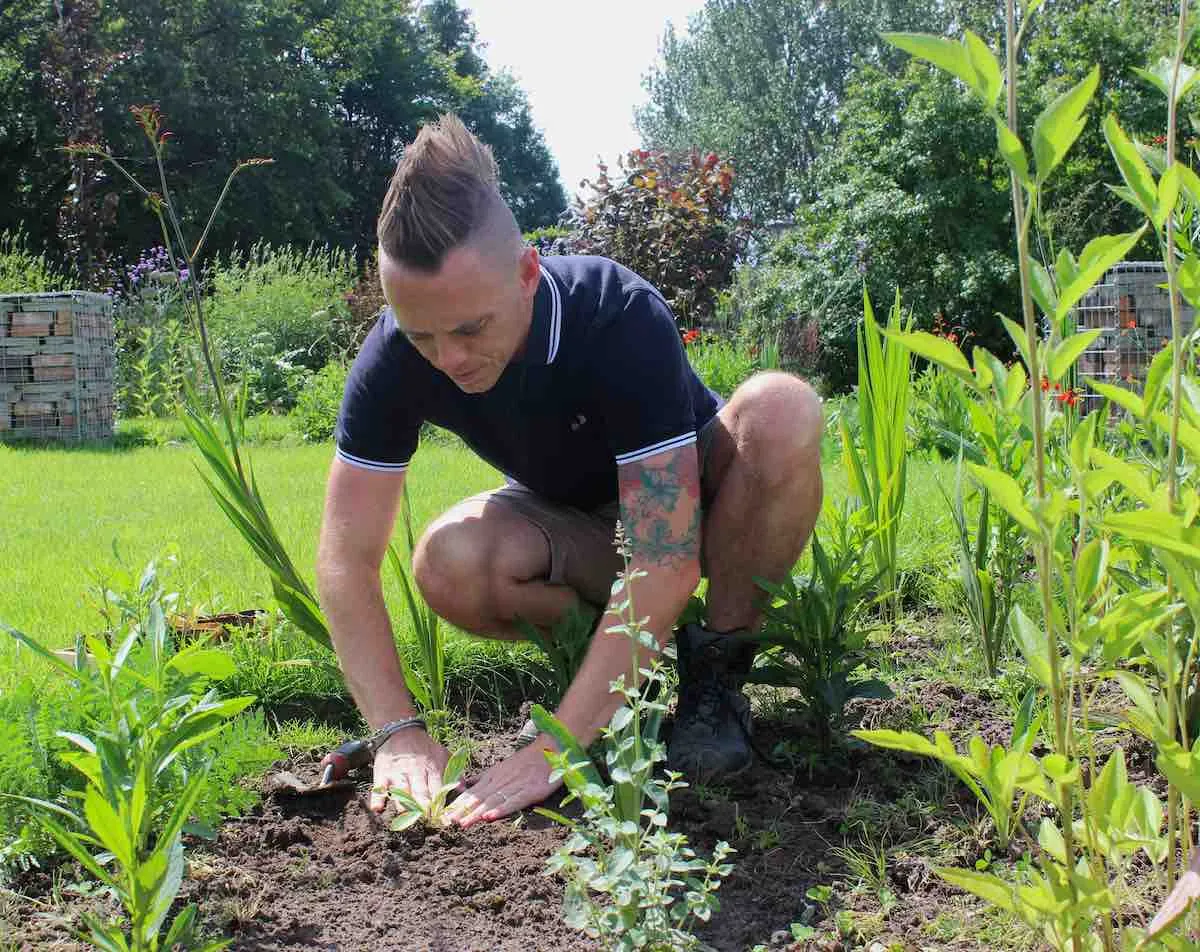-
Ask a Gardening Question Forum
 Lee Burkhill: Award Winning Designer & BBC 1's Garden Rescue Presenters Official Blog
Lee Burkhill: Award Winning Designer & BBC 1's Garden Rescue Presenters Official Blog

Welcome to the ultimate beginner gardening and garden design forum! Where no gardening question is too silly or obvious. This online gardening forum is run by Lee Burkhill, the Garden Ninja from BBC 1's Garden Rescue and a trusted group of experienced gardeners.
Whether you are a beginner or an expert gardener, it's a safe place to ask garden-related questions for garden design or planting. If you have a problem in your garden or need help, this is the Garden Forum for you!

Posting Rules: This space is open for all garden-related questions. Please be polite, courteous and respectful. If you wouldn't say it to your mum's face, then don't post it here. Please don't promote, sell, link spam or advertise here. Please don't ask for 'cheeky' full Garden redesigns here. They will be deleted.
If you need a garden design service, please use this page to book a design consultation. I will block anyone who breaks these rules or is discourteous to the Garden Ninja Community.
Join the forum below with your gardening questions!
Quote from My tiny garden on 17th April 2024, 1:16 pmHi Lee I'd like your advice on growing strawberries please. Last year, we bought one plant (for my daughter, I don't like them! 🤢). It was put in a medium sized plastic pot with multi purpose peat free compost and fed every so often with an organic liquid feed. It put out several really long runners, had a few flowers, but only one or two strawberries. Eventually, the leaves went yellow or died off. Not sure if I did the right thing 🤔, but I cut it all back and salvaged what I could and repotted it a few weeks back ( see attached pic). It looks ok so far, so what do I do going forward, in terms of best pot size, feeding, cutting off or leaving runners (I did read if they're left, the plant won't produce fruit??) Thank you for your help.
Hi Lee I'd like your advice on growing strawberries please. Last year, we bought one plant (for my daughter, I don't like them! 🤢). It was put in a medium sized plastic pot with multi purpose peat free compost and fed every so often with an organic liquid feed. It put out several really long runners, had a few flowers, but only one or two strawberries. Eventually, the leaves went yellow or died off. Not sure if I did the right thing 🤔, but I cut it all back and salvaged what I could and repotted it a few weeks back ( see attached pic). It looks ok so far, so what do I do going forward, in terms of best pot size, feeding, cutting off or leaving runners (I did read if they're left, the plant won't produce fruit??) Thank you for your help.
Uploaded files:Quote from Lee Garden Ninja on 21st April 2024, 10:08 amHi @my-tiny-garden
Good to hear from you.
When it comes to growing strawberries, they are better in larger containers or, ideally, on the ground. They like to send out runners and spread. I believe that in that tiny pot, the strawberry simply doesn't have enough space or feed, even with liquid feeds. I'd transfer it to a larger pot or give it a space in a herbaceous bed where it can creep and fill out a bit.
How many strawberries can you get off one plant?
In my experience, not man, I'm afraid! You need row upon row of strawberries covered from the birds and under a polytunnel to get a real harvest. This is why I just grow them for the odd 'pick and enjoy' fruit mid-summer. You may get 6-8 strawberries from each plant.
The runner does zap the energy a bit, but it's also the way that the strawberries propagate, so cutting them off gives more fruit but fewer strawberry plants. A decision you need to make. I have a few strawberries running through my modern cottage border, and I get a couple of fruits, but mainly, their leaves and spread looks lovely weaving through the border.
How to grow strawberries
Although you're not going to be overrun with strawberries, they are a cute and pest-free plant, especially for children to grow. Lets look at a more detailed guide on how to grow strawberries:
- Choose the Right Variety: When selecting strawberry varieties, consider your climate, available space, and desired harvest time. June-bearing strawberries produce a single large crop in late spring or early summer, making them ideal for preserving or enjoying fresh. Everbearing varieties yield smaller harvests throughout the growing season, while day-neutral varieties continuously produce fruit regardless of day length. Popular cultivars include 'Seascape,' 'Albion,' and 'Eversweet.'
Select a Sunny Location: Strawberries thrive in full sun, so choose a location in your garden that receives at least 6-8 hours of direct sunlight daily. Ensure the soil is well-draining to prevent waterlogged conditions, which can lead to root rot. Raised beds or containers can provide excellent drainage and help control soil quality. Larger pots are the best place to fully establish.
Prepare the Soil: Prior to planting, prepare the soil by incorporating organic matter such as compost, aged manure, or leaf mould. This improves soil structure, fertility, and moisture retention. Aim for a slightly acidic to neutral soil pH of around 6.0 to 6.8, as strawberries prefer slightly acidic conditions.
Planting: Strawberry plants can be propagated from bare-root crowns, potted plants, or runners (daughter plants produced by the mother plant). Plant them in early spring or late summer, spacing them 12-18 inches apart in rows spaced 2-3 feet apart. Ensure the crown (the point where the roots meet the stem) is level with the soil surface and the roots are spread out.
Mulching: Apply a layer of organic mulch, such as straw, pine needles, or shredded leaves, around the plants to suppress weeds, retain soil moisture, and prevent the fruits from touching the soil. Mulching also helps regulate soil temperature and reduces the risk of soil-borne diseases. It reduces the chances of slugs munching your fruits too!
Watering: Keep the soil consistently moist, especially during flowering and fruiting. Water deeply and evenly, ensuring the root zone is thoroughly hydrated. Avoid overhead watering to prevent fungal diseases, and water early in the day to allow foliage to dry before evening.
Fertilizing: Fertilize strawberries with a balanced fertilizer or one formulated specifically for berries. Apply fertilizer according to package instructions, typically in early spring before flowering and again after the first harvest. Avoid over-fertilizing, as this can lead to excessive foliage growth at the expense of fruit production.
https://youtu.be/5BhGtCjT2TQ
Pruning: Remove any runners (elongated stems) that develop from the mother plant, as they divert energy away from fruit production. Trim back any dead or yellowing leaves to improve air circulation and reduce the risk of disease. Pruning also helps maintain plant vigour and productivity.
Pest and Disease Management: Monitor strawberry plants regularly for signs of pests such as aphids, slugs, snails, and spider mites, as well as diseases such as powdery mildew, grey mould (Botrytis), and strawberry root rot. Use integrated pest management (IPM) techniques, including cultural controls, biological controls, and organic pesticides, to manage pests and diseases effectively.
Harvesting: Harvest ripe strawberries when they reach their full colour and size, usually about 4-6 weeks after flowering. Gently lift the fruits from the plant, taking care not to damage the delicate berries or nearby foliage. Enjoy fresh strawberries immediately or use them in a variety of culinary creations, from jams and pies to salads and smoothies.
Lastly, My Tiny Garden, if you like my work and the advice I've given you, I'm always grateful for a review of my work on Google or Facebook. It helps bring new Ninjas and clients to the site and keeps all of my advice flowing freely!
https://g.page/r/CZ-SiqVUavxWEBM/review
All the best
Lee
Good to hear from you.
When it comes to growing strawberries, they are better in larger containers or, ideally, on the ground. They like to send out runners and spread. I believe that in that tiny pot, the strawberry simply doesn't have enough space or feed, even with liquid feeds. I'd transfer it to a larger pot or give it a space in a herbaceous bed where it can creep and fill out a bit.

How many strawberries can you get off one plant?
In my experience, not man, I'm afraid! You need row upon row of strawberries covered from the birds and under a polytunnel to get a real harvest. This is why I just grow them for the odd 'pick and enjoy' fruit mid-summer. You may get 6-8 strawberries from each plant.
The runner does zap the energy a bit, but it's also the way that the strawberries propagate, so cutting them off gives more fruit but fewer strawberry plants. A decision you need to make. I have a few strawberries running through my modern cottage border, and I get a couple of fruits, but mainly, their leaves and spread looks lovely weaving through the border.
How to grow strawberries
Although you're not going to be overrun with strawberries, they are a cute and pest-free plant, especially for children to grow. Lets look at a more detailed guide on how to grow strawberries:
Select a Sunny Location: Strawberries thrive in full sun, so choose a location in your garden that receives at least 6-8 hours of direct sunlight daily. Ensure the soil is well-draining to prevent waterlogged conditions, which can lead to root rot. Raised beds or containers can provide excellent drainage and help control soil quality. Larger pots are the best place to fully establish.
Prepare the Soil: Prior to planting, prepare the soil by incorporating organic matter such as compost, aged manure, or leaf mould. This improves soil structure, fertility, and moisture retention. Aim for a slightly acidic to neutral soil pH of around 6.0 to 6.8, as strawberries prefer slightly acidic conditions.
Planting: Strawberry plants can be propagated from bare-root crowns, potted plants, or runners (daughter plants produced by the mother plant). Plant them in early spring or late summer, spacing them 12-18 inches apart in rows spaced 2-3 feet apart. Ensure the crown (the point where the roots meet the stem) is level with the soil surface and the roots are spread out.
Mulching: Apply a layer of organic mulch, such as straw, pine needles, or shredded leaves, around the plants to suppress weeds, retain soil moisture, and prevent the fruits from touching the soil. Mulching also helps regulate soil temperature and reduces the risk of soil-borne diseases. It reduces the chances of slugs munching your fruits too!
Watering: Keep the soil consistently moist, especially during flowering and fruiting. Water deeply and evenly, ensuring the root zone is thoroughly hydrated. Avoid overhead watering to prevent fungal diseases, and water early in the day to allow foliage to dry before evening.
Fertilizing: Fertilize strawberries with a balanced fertilizer or one formulated specifically for berries. Apply fertilizer according to package instructions, typically in early spring before flowering and again after the first harvest. Avoid over-fertilizing, as this can lead to excessive foliage growth at the expense of fruit production.
Pruning: Remove any runners (elongated stems) that develop from the mother plant, as they divert energy away from fruit production. Trim back any dead or yellowing leaves to improve air circulation and reduce the risk of disease. Pruning also helps maintain plant vigour and productivity.
Pest and Disease Management: Monitor strawberry plants regularly for signs of pests such as aphids, slugs, snails, and spider mites, as well as diseases such as powdery mildew, grey mould (Botrytis), and strawberry root rot. Use integrated pest management (IPM) techniques, including cultural controls, biological controls, and organic pesticides, to manage pests and diseases effectively.
Harvesting: Harvest ripe strawberries when they reach their full colour and size, usually about 4-6 weeks after flowering. Gently lift the fruits from the plant, taking care not to damage the delicate berries or nearby foliage. Enjoy fresh strawberries immediately or use them in a variety of culinary creations, from jams and pies to salads and smoothies.
Lastly, My Tiny Garden, if you like my work and the advice I've given you, I'm always grateful for a review of my work on Google or Facebook. It helps bring new Ninjas and clients to the site and keeps all of my advice flowing freely!
https://g.page/r/CZ-SiqVUavxWEBM/review
All the best
Lee


Vuelo Top 10 Garden Blogger Award 2019
Chelsea Flower Show Director Generals Trade Stand Award 2018
5 Star Trade Stand Hampton Court 2018
Garden Media Guild New Talent 2017 Finalist
RHS & BBC Feel Good Gardens Winner 2016
 To my YouTube channel
To my YouTube channel 
JOIN THE NINJAS
Join our Ninja community for your Exclusive Discounts
JOIN THE NINJAS

Be the first in line for new Guides, Discount codes and Offers